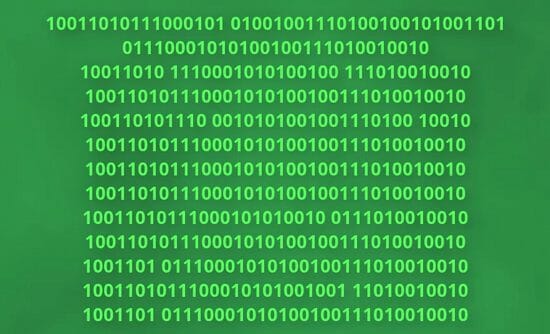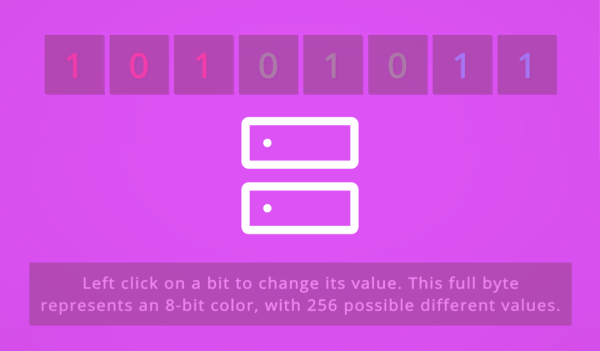You can access the full course here: JR CODERS – DATA REPRESENTATION & BINARY
What is Binary
In our daily lives, we use the base 10 numbering system. This decimal system has, as the name suggests, 10 possible digits to represent numbers: 0, 1, 2, 3, 4, 5, 6, 7, 8, and 9. This makes sense to us as we have 10 fingers, making counting easier this way.
Now, when it comes to computers, they utilize the base 2 numbering system (aka, binary) which has only 2 digits: 0 and 1. Zeros and ones are all they need to represent any sort of data. The reason this is so is due to transistors, on the hardware level, being either in an OFF or ON state:

Each 0 (which stands for the transistor’s OFF state) and 1 (ON state) is also known as a bit. Every 8 bits make up a byte, such as 01011010 for example.
A byte is the unit that computers use to represent numbers, letters, and symbols. However, note that binary is not human-friendly:

Thus, computers need to convert binary back to a readable format for us humans:

Transcript
In our everyday lives, we use a numbering system known as base 10. Meaning, there are 10 possible digits we can use to build our numbers.
This is because we have 10 fingers. So counting in sets of 10 makes sense. Yet when it comes to computers, they use binary which is a base two numbering system.
Ones and zeros are all they need to construct as many numbers as they wish. This is because on the hardware level, the transistors can either be in an on or off state.
These individual ones and zeros are also known as bits and eight of them make up a byte. A byte is the unit that computers use to represent numbers, letters, and symbols.
Now reading and working with binary, isn’t human-friendly at all. So whenever we are interacting with a computer, it is consistently converting that binary into a variety of different things to make it more readable for us, humans.
Things like letters, base 10 numbers, colors, and even sound.
Interested in continuing? Check out our all-access plan which includes 250+ courses, guided curriculums, new courses monthly, access to expert course mentors, and more!






